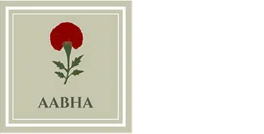The civilization of ancient Egypt is renowned not only for its monumental architecture and rich mythology but also for its sophisticated integration of scientific knowledge and artistic expression. Unlike modern compartmentalized disciplines, Egyptian culture embraced a holistic approach where science, art, and spirituality intertwined seamlessly. This comprehensive worldview allowed Egyptians to understand and manipulate their environment with remarkable precision, using symbols and practices that carried deeper spiritual and practical significance. Exploring these interconnected elements offers valuable insights into how ancient wisdom continues to inspire contemporary interdisciplinary thinking.
Table of Contents
- The Philosophical Foundations of Egyptian Science and Art
- The Celestial Knowledge of the Egyptians
- Artistic Practices as a Reflection of Scientific Understanding
- The Role of the Scribe: Guardians of Knowledge and Skill Transmission
- The Eye of Horus as a Modern Symbol of Ancient Wisdom
- Non-Obvious Depths: Hidden Connections and Modern Implications
- Unlocking Ancient Wisdom for Today
The Philosophical Foundations of Egyptian Science and Art
Central to Egyptian culture was the concept of Ma’at, representing cosmic order, balance, and harmony. This philosophical principle influenced both scientific endeavors and artistic representations, ensuring that all creations reflected universal truths. Artistic motifs often embodied this order through precise geometric proportions and symbolic imagery, serving as visual expressions of underlying cosmic principles.
Religious beliefs further shaped scientific practices, as deities were associated with natural phenomena and human health. For example, the god Thoth was linked to wisdom, measurement, and writing, guiding scribes and scientists in their pursuit of knowledge. The use of symbolism—such as the ankh representing life—allowed complex ideas to transcend language barriers, conveying spiritual and scientific concepts simultaneously across disciplines.
This integration of philosophy, science, and art created a cohesive worldview where each element reinforced the others, fostering an environment for innovation that balanced practical needs with spiritual understanding.
The Celestial Knowledge of the Egyptians
Egyptians demonstrated extraordinary observational skills in astronomy, recognizing patterns in the night sky that informed both their spiritual practices and architectural designs. They divided the night into 12 hours, a metaphor for spiritual progression, symbolizing the journey from ignorance to enlightenment. This division reflected their understanding of natural cycles and the importance of celestial timing.
One fascinating example is the scarab beetle, which was associated with the Milky Way. The beetle’s daily movement and regenerative symbolism mirrored the navigation of the cosmos, helping Egyptians orient themselves in the desert and align their temples with celestial events. These observations influenced the orientation of pyramids and temples, aligning them with solstices and star risings, which were integral to religious rituals and agricultural cycles.
The Egyptians’ detailed sky charts and star alignments reveal their deep understanding of celestial bodies, which they believed governed earthly affairs and spiritual realms. Their mastery of astronomy exemplifies how science and spirituality were intertwined in their worldview.
Artistic Practices as a Reflection of Scientific Understanding
Egyptian artisans employed precise geometric principles to create harmonious proportions in temples, tombs, and statuary. The Golden Ratio, although not formally defined then, influenced their use of symmetry and balance, ensuring that structures embodied the universal order they observed in nature.
Symbols like the Eye of Horus served multiple functions—protection, health, and royal authority—acting as visual encapsulations of complex scientific and spiritual ideas. The Eye’s detailed design reflects an understanding of anatomy, optics, and symbolism, demonstrating how art was used to encode knowledge that could be passed down generations.
Furthermore, Egyptian art often functioned as a mnemonic device. Hieroglyphs and symbolic motifs helped scribes and priests remember intricate scientific procedures, spiritual doctrines, and cosmological theories — a method that preserved knowledge before the advent of written textbooks.
The Role of the Scribe: Guardians of Knowledge and Skill Transmission
Scribes were highly trained specialists, responsible for encoding, preserving, and transmitting scientific, religious, and artistic knowledge. This hereditary tradition ensured continuity, with skills passed from father to son, maintaining the integrity of Egyptian wisdom over centuries.
They utilized tools like reed brushes, palettes, and wax tablets to record complex formulas, astronomical data, and mythological stories. Their work was not merely documentary but also interpretative, with illustrations and hieroglyphs serving to encode layers of scientific and spiritual meaning.
This hereditary transmission created a cohesive intellectual community that preserved Egyptian achievements in science and art, enabling innovations to build upon previous knowledge.
The Eye of Horus as a Modern Symbol of Ancient Wisdom
The Eye of Horus originated from a myth involving the falcon-headed god Horus, who lost and then regained his eye—symbolizing restoration and protection. Its intricate design encapsulates a blend of spiritual significance and scientific understanding of anatomy and optics. The eye’s segments represent different senses and protective aspects, embodying a holistic approach to health, security, and divine power.
Today, the Eye of Horus is widely used as a symbol of protection, healing, and enlightenment. It illustrates how ancient symbols can embody the integration of science, art, and spirituality—principles still relevant in modern contexts. For those interested in exploring deeper connections, the symbol’s rich history and meanings can be experienced firsthand at check it oUt.
Non-Obvious Depths: Hidden Connections and Modern Implications
One fascinating aspect of Egyptian symbolism is the relationship between the cyclical concept of time—such as the 12 hours of night—and natural phenomena like the phases of the moon or solar cycles. These cycles reflect an understanding that natural patterns govern spiritual and worldly affairs, a principle that remains central in modern science.
For example, the scarab beetle’s navigation using the Milky Way demonstrates a scientific appreciation of celestial navigation, predating modern GPS technology. Such practices highlight how Egyptian science was embedded in daily life, blending observation with symbolism for practical navigation and spiritual guidance.
Modern interdisciplinary approaches can learn from this integration, emphasizing the importance of combining scientific rigor with symbolic thinking to solve complex problems.
Unlocking Ancient Wisdom for Today
The ancient Egyptians demonstrated that the fusion of science and art creates a powerful framework for understanding and shaping the world. Their use of symbols, geometry, celestial observations, and hereditary knowledge transmission provided a blueprint for sustainable cultural development—one that prioritized harmony between practical and spiritual insights.
Recognizing these connections encourages us to view symbols like the Eye of Horus not merely as decorative motifs but as gateways to deeper knowledge. Embracing this holistic perspective can inspire modern innovation, fostering a balanced approach to scientific discovery and artistic expression.
In essence, ancient Egyptian wisdom offers timeless lessons: that understanding comes from integrating diverse fields, and that symbols can serve as enduring bridges between the material and spiritual worlds.


